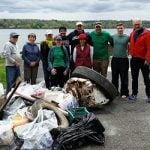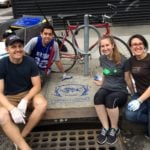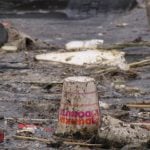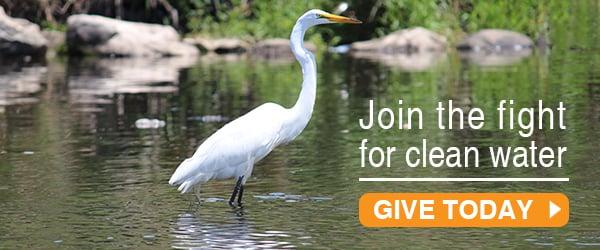What You Can Do
Riverkeeper can’t do this work alone. We depend on each and every one of you to help us clean up solid waste pollution out of the Hudson and to help prevent it from returning.
Tell New York’s leaders: Stop bottle pollution
Plastic bottles the most common type of litter found along the Hudson in 2019. Expanding New York’s 5-cent deposit on containers is a critical policy solution to address both plastic pollution and the current recycling crisis.
DOWNLOAD Petitions to expand New York State’s bottle deposit program to include non-carbonated beverages as well as wine and liquor glass bottles.
DOWNLOAD Fact sheets about the importance of expanding NYS’s bottle deposit program
Pass Legislation in your Town, Village, City, County or State
Help combat marine debris by passing legislation to stop marine debris at the source.
View sample policies to reduce single-use pollution
Organize a Cleanup in Your Community
 Prevent litter from getting into your local waterways, or help cleanup the trash on your shorelines. Use the resources below to learn how to recruit volunteers, ask for donations, and have a safe and successful cleanup.
Prevent litter from getting into your local waterways, or help cleanup the trash on your shorelines. Use the resources below to learn how to recruit volunteers, ask for donations, and have a safe and successful cleanup.
Cleanup Coordinator Checklist
Cleanup Donation Form
Cleanup Day Of Checklist and Reporting Worksheet
Join or Initiate a Storm Drain Project in your Brooklyn Community
 To reduce the amount of trash and other undesirable material entering our waterways, Riverkeeper is working with the Gowanus Canal Conservancy, Newtown Creek Alliance, and the SWIM Coalition to stencil storm drains in Brooklyn. This project is funded by a grant from the New York State Pollution Prevention Institute.
To reduce the amount of trash and other undesirable material entering our waterways, Riverkeeper is working with the Gowanus Canal Conservancy, Newtown Creek Alliance, and the SWIM Coalition to stencil storm drains in Brooklyn. This project is funded by a grant from the New York State Pollution Prevention Institute.
Brooklyn Stenciling Project Aims to Reduce Marine Debris
Storm drain stenciling manual
VIDEO: How to host a storm drain stenciling project
Join or coordinate a stenciling event near Newtown Creek by e-mailing Lisa at [email protected] or near the Gowanus Canal by e-mailing [email protected].
Prevention
 Educating yourself and your community on the impacts of litter is the most important strategy for caring about our waters. Together we can reduce litter by educating people about the sources and solutions to river debris. If you want to join our team of outreach volunteers please visit our volunteer page.
Educating yourself and your community on the impacts of litter is the most important strategy for caring about our waters. Together we can reduce litter by educating people about the sources and solutions to river debris. If you want to join our team of outreach volunteers please visit our volunteer page.
Reducing, reusing, and recycling is the most effective way to address your individual contribution to litter and trash. Be conscious of the types of products you purchase:
1. Do they use excessive packaging? If so, is there an alternative that uses fewer resources? If not, write the company a letter or call. For policy action write your local, state and federal legislators about your concerns.
2. Avoid beauty care products with microbeads. Microbeads are plastic pellets found in many body care products. These pellets pass untreated through wastewater treatment plants and enter the environment. Pellets, like other plastics can be mistaken as food by wildlife and lead to detrimental impacts.
3. Do you have a reusable shopping bag? If so, great- keep it where you won’t forget it. Either by the door or keep one in your car. If not, reusable bags are available for purchase at most grocery stores for between $1-$5, yet you can reduce your plastic bag use by thousands of bags per year.
4. Recycle according to local guidelines. Many items such as foam plastic and mixed type products cannot be recycled, yet are commonly found in recycling bins. Check your local waste manager’s website to learn about your local sanitation guidelines. For a good overview please visit New York City’s recycling page.
Write a Letter
For policy action write your local, state and federal legislators or officials about your concerns. Contact your officials here.
We work with partners to offer year round cleanup opportunities across the Hudson Valley. Please check our volunteer page for updates about service projects. Remember, a clean river is less likely to be neglected in the future!
Host a Film Screening
Hosting a community screening of films about plastic pollution is a great way to build awareness and catalyze action in your community. We recommend the following films:
Bag it: is your life too plastic?

